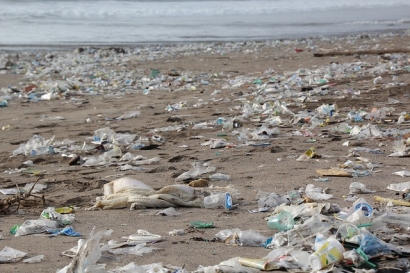
It's a difficult problem to address, given the many causes of plastic pollution. Land-based sources account for the large majority of the problem, whether it's litter, trash blown out of garbage containers or debris from construction, ports or industrial facilities. Ocean-based sources like discarded fishing nets and gear also contribute to the growing crisis.
Beyond the dangers of plastic bags, containers and similar items, microplastics pose a serious risk as well. These small plastic pieces or fibers can endanger the health of marine ecosystems and human populations alike. With the many threats of plastic pollution, it's clear that an immediate solution is necessary to preserve both the environment and public health.
Fortunately, the process of cold plasma pyrolysis has shown considerable promise.
The Process of Cold Plasma Pyrolysis
The composition of plastic makes it one of the most valuable waste materials for energy generation. It contains mainly carbon and hydrogen with a similar energy content to conventional fuels like diesel. More than that, it's possible to convert all plastics into useful forms of energy through a process called cold plasma pyrolysis.
As context, pyrolysis is a method of heating. It decomposes organic materials in an environment with limited oxygen, using temperatures between 400 and 650 degrees Celsius. The process typically covers the energy generation of heat, electricity or fuels, but it has even greater potential with the integration of cold plasma.
Cold plasma pyrolysis allows for the conversion of waste plastics into ethylene, methane and hydrogen. It's feasible to use methane and hydrogen as clean fuels, as they only produce small amounts of destructive compounds such as carbon dioxide and unburnt hydrocarbons. This has far-reaching implications for energy generation.
In the past, plasma technologies would require temperatures exceeding 3,000 degrees Celsius to process waste. Cold plasma pyrolysis allows for a significant reduction in these temperatures due to its "hot" electrons. These highly energetic electrons are excellent for breaking down the chemical bonds of plastics.
Concerning the generation of electricity for cold plasma, it would be relatively simple to source renewable energy. The chemical products derived from the process could function as a form of energy storage. Furthermore, the reaction time with cold plasma takes only seconds, accelerating the process with a potential decrease in costs.
The Necessity of Immediate Action
Through the adoption of technologies for cold plasma pyrolysis, we could eliminate a large number of plastics in a practical way. Using plastics for energy production is preferable to the alternative. Diverting waste may save a percentage of the approximately 100,000 marine mammals and creatures that lose their lives every year due to plastic entanglement.
Of course, plastic pollution isn't only an environmental issue that harms aquatic ecosystems. In the United States, 94% of tap water samples tested positive for microplastics. The issue of plastic pollution is extensive, stretching far beyond the country's rivers and oceans into the homes of everyday Americans.
Though the dangers seem overwhelming in scope, the application of cold plasma pyrolysis has potential. In combination with renewable energy systems, it presents a sustainable solution for managing the epidemic of plastic pollution. It also presents a promising method of energy generation with sufficient investment.
Looking Toward the Future
The escalating threat of plastic pollution is difficult to manage. With the many sources of plastic waste, its permanency and similar challenges, the situation is dire. Even so, solutions like cold plasma pyrolysis are a reminder that we're moving in the right direction — toward a future where we've reconciled our consumption with the needs of the natural world.

